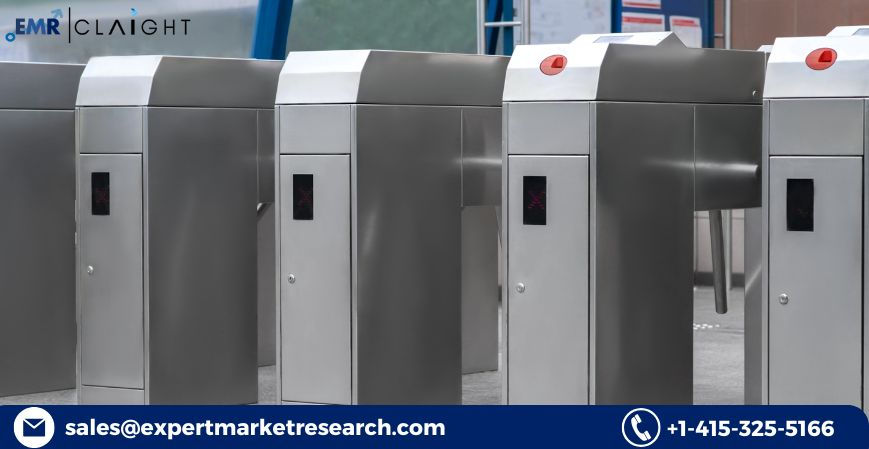Automated Fare Collection Market Size, Trends & Forecast 2025-2034
- Emily Jacks
- Jul 24
- 4 min read

The automated fare collection market is transforming how people pay for and access transportation services. By replacing outdated manual ticketing systems with integrated digital solutions, automated fare collection (AFC) streamlines processes for both operators and passengers. AFC systems include smart cards, contactless payments, mobile ticketing, and online platforms, making public transportation more efficient, secure, and convenient. As cities worldwide focus on smart mobility and contactless transactions, the demand for modern fare collection systems continues to surge, boosting urban transit sustainability and user experience while significantly cutting down operational inefficiencies.
Expert Market Research on Automated Fare Collection Market
Expert Market Research projects the future of the automated fare collection market to be both dynamic and transformative. As cities modernize transport infrastructure, the role of AFC solutions will become indispensable for delivering seamless passenger experiences and optimizing operations. EMR’s insights reveal that smart ticketing, contactless payment, and integrated mobility platforms will redefine the future of commuting, enabling cost savings and operational excellence for operators. By leveraging Expert Market Research, industry leaders and policymakers gain strategic perspectives to harness emerging technologies, ensuring that the AFC market remains at the forefront of the smart transit revolution for years to come.
Automated Fare Collection Market Size
In 2024, the global automated fare collection market was valued at USD 11.77 Billion, showcasing robust adoption across transportation sectors. This impressive figure highlights the industry's rapid shift towards digitized solutions and the increasing preference for contactless and mobile payment methods among commuters. With cities expanding metro networks, bus fleets, and smart parking solutions, the need for efficient fare collection has grown exponentially. The market size demonstrates how governments and private operators are investing heavily in modernizing infrastructure to support seamless fare payments. This market value also underlines the critical role AFC systems play in supporting the future of smart cities and connected transit ecosystems.
Market Trends Fueling Growth
Key trends shaping the automated fare collection market include the growing integration of mobile payment options, advancements in near-field communication (NFC) technology, and the rising popularity of smart cards and QR-based ticketing systems. Transit operators are increasingly partnering with fintech companies to enable seamless mobile wallets and unified travel passes, catering to tech-savvy commuters. Additionally, the push for sustainability has led to a focus on reducing paper tickets and minimizing carbon footprints. Governments worldwide are investing in smart city initiatives, which directly boost AFC deployment. These trends reflect how modern commuters expect fast, secure, and flexible payment experiences that align with their digital lifestyles.
Market Opportunities and Challenges
As urbanization accelerates and smart transportation becomes essential, the AFC market presents immense opportunities for both established players and new entrants. Opportunities lie in integrating AI and big data analytics to predict ridership patterns, optimize pricing models, and personalize passenger experiences. The rise of multimodal transport and mobility-as-a-service (MaaS) platforms creates further growth potential for advanced fare solutions. However, challenges include high upfront implementation costs, system interoperability issues across regions, and concerns about data privacy. Overcoming these barriers requires robust cybersecurity measures, scalable infrastructure, and supportive government policies to ensure smooth, secure, and user-friendly fare collection operations globally.
Segmentation of the Automated Fare Collection Market
Market Breakup by Application
Rail and Transport
Parking
Theme Park
Others
Market Breakup by Service Type
Consulting
System Implementation
Training, Support & Maintenance
Managed Services
Others
Market Breakup by Technology
Near-Field Communication (NFC)
Magnetic Stripes
Others
Market Breakup by Industry
Transportation and Logistics
Government
Media & Entertainment
Retail
Others
Market Breakup by Region
North America
Europe
Asia Pacific
Latin America
Middle East and Africa
Automated Fare Collection Market Growth
The automated fare collection market is expected to expand at an impressive CAGR of 12.50% during the forecast period of 2025-2034. This rapid growth reflects the increasing adoption of contactless payments, smart ticketing, and integrated transport systems in urban and semi-urban areas. Governments and transit agencies are focusing on infrastructure upgrades to handle growing commuter volumes, ensuring smoother operations and reduced fraud risks. This growth trajectory is also fueled by rising investments in IoT and digital platforms that link various transportation modes under unified payment systems. As AFC technologies evolve, they promise to make public transit more accessible, affordable, and sustainable, driving growth across global markets.
Automated Fare Collection Market Forecast
Looking ahead, the automated fare collection market is forecasted to reach a remarkable USD 38.22 Billion by 2034. This figure underlines how pivotal AFC systems will be in shaping the future of global transit networks. The surge in market value is driven by technological advancements, increased adoption of smart city frameworks, and greater reliance on mobile-based solutions. Countries are actively upgrading legacy systems with AI-powered and cloud-based fare management solutions to cater to millions of daily commuters. The forecast highlights the expanding scope of AFC, covering diverse applications from public transport to parking and theme parks, ensuring convenient, contactless, and cost-effective operations for stakeholders worldwide.
Competitor Analysis
The automated fare collection market is highly competitive, with major players driving innovation and technological upgrades to gain an edge. Companies are investing in R&D, strategic partnerships, and global expansions to strengthen their market presence. Leading players include:
Advanced Card Systems Ltd. – Offers smart card solutions tailored for secure automated fare payments.
Cubic Corporation – Renowned for end-to-end AFC systems powering major urban transit projects.
LG CNS – Develops cutting-edge digital fare management solutions integrated with mobile payment platforms.
Atos SE – Provides digital transformation services, including robust AFC technologies for smart transport.
Singapore Technologies Engineering Ltd. – Specializes in intelligent transport systems, including automated fare collection.
Nippon Signal Co., Ltd. – Designs AFC equipment enhancing passenger flow and ticketing efficiency.
Thales SA – Offers comprehensive ticketing systems and contactless smart card solutions worldwide.
LECIP HOLDINGS CORPORATION – Manufactures AFC devices improving fare processing accuracy for buses and trains.
NXP Semiconductors N.V. – Supplies secure NFC chips powering smart ticketing and mobile payments.
Scheidt & Bachmann GmbH – Delivers AFC and parking management systems trusted by major transit operators.












Kommentare